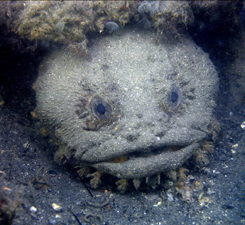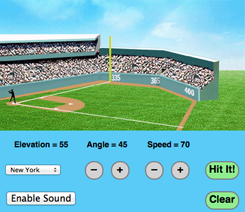 |
T A B L E O F C O N T E N T S
M A Y / J U N E 2 0 1 4
Volume 20, Number 5/6
doi:10.1045/may2014-contents
ISSN: 1082-9873
E D I T O R I A L
The Current Issue
Editorial by Laurence Lannom, Corporation for National Research Initiatives
A R T I C L E S
The Odysci Academic Search System
Article by Reinaldo A. Bergamaschi, Henrique P. de Oliveira, and Akihito Kumon Jr., Odysci, Inc. and Rodrigo C. Rezende, Microsoft Corporation
Abstract: Web-based academic search systems have enabled researchers to find and access scientific publications worldwide in a way that was not possible ten years ago. Nevertheless, the quality of such search systems can vary considerably in coverage, ranking quality, entity resolution and indexing time. This paper describes the Odysci Academic Search System including all steps necessary from acquiring a document to making it available for user search. We describe in detail the steps for data import, data de-duplication, data indexing, search process, ranking of results, parallel processing and finally user experience, including many practical aspects commonly overlooked in publications, but important to make the system work well and provide a good user experience.
Representing Cultural Collections in Digital Aggregation and Exchange Environments
Article by Karen M. Wickett, University of Texas at Austin; Antoine Isaac, Europeana Foundation; Martin Doerr, FORTH-ICS, Crete; Katrina Fenlon and Carole Palmer, University of Illinois at Urbana Champaign; Carlo Meghini, Instituto di Scienza e Tecnologie dell'Informazione
Abstract: The representation of collections in digital library systems that aggregate or exchange cultural heritage data can serve a number of useful functions. In this article, we present specific roles that collections can play in digital aggregations, representational requirements that arise from those roles, and modeling strategies for meeting the requirements. The functional roles of collections and collection descriptions speak to the needs of individual users accessing or contributing content, system developers seeking to improve search experiences, and institutions providing data to federated aggregations. However, the current data models that support cultural heritage aggregations are not designed to fully accommodate and integrate collection-level data. Therefore we have developed a set of general requirements for the representation of collections in digital aggregation systems. In order to demonstrate how these requirements can be addressed in a current operational context, we present specific strategies for collection representation in systems that use the Europeana Data Model.
Building the Open Elements of an Open Data Competition
Article by Mathieu d'Aquin, Knowledge Media Institute of The Open University, United Kingdom; Stefan Dietze and Eelco Herder, L3S Research Center, Germany; Hendrik Drachsler, ELSTEC institute of the Open University, The Netherlands; Marieke Guy, Open Knowledge, United Kingdom; Elisabetta Parodi, Lattanzio Learning, Italy
Abstract: The European Union is increasingly committed to pushing forward open approaches as indicated by the G8 Open Data Charter, the Opening Up Education initiative, the launch of the Open Education Europa Portal for OER resources and other similar initiatives. The EU-funded LinkedUp Project (Linking Web data for education) aims to gather successful exemplars of the use of open web data in education, with the objective of pushing forward the exploitation of the increasing amounts of public, open data available online. It aspires to do this by facilitating developer competitions and deploying an evaluation framework, which identifies innovative uses of robust, web-scale information management applications. This article will look at how LinkedUp has moved beyond advocacy of linked open data and has begun encompassing open approaches in all areas of work. One key focus has been in bringing together the open elements of an open data competition and sharing them as widely and openly as possible. It is anticipated that these elements can then be progressed and built upon by others organising similar competitions in both academia and industry.
Evaluating Possible Uses of a Raspberry Pi in an Academic Library Environment
Article by Jason L. Cooper and Jon P. Knight, Loughborough University
Abstract: Loughborough University's Library Systems Team investigated two potential uses for Raspberry Pis. The first use to be identified for investigation was using the Raspberry Pi as a replacement for the existing OPAC hardware. While it met a majority of the requirements there were issues with the responsiveness to user input at certain times. The second use for Raspberry Pis investigated was to provide a number of digital signs to display details about resource bookings and the availability of PCs in IT labs around campus. The Raspberry Pi demonstrated that it was ideally suited to this task.
N E W S & E V E N T S
In Brief: Short Items of Current Awareness
In the News: Recent Press Releases and Announcements
Clips & Pointers: Documents, Deadlines, Calls for Participation
Meetings, Conferences, Workshops: Calendar of Activities Associated with Digital Libraries Research and Technologies
|
 |
F E A T U R E D D I G I T A L
C O L L E C T I O N


2014 Cool Science Image Contest winner.
The oyster toadfish, Opsanus tau, are the fastest known twitching vertebrate muscles at two hundred times per second, and are used by males to produce a foghorn-like sound to attract females.
[Courtesy of The Why Files. Used with permission.]

Interactives: The Baseball Interactive.
Friction and Fly Balls!!
[Courtesy of The Why Files. Used with permission.]
The Why Files is one of the world's oldest digital popular science venues. Venturing onto the web in January 1996, The Why Files has continuously published stories of science and technology and their implications since its inception under the auspices of the National Science Foundation-funded National Institute for Science Education. Now a project of the University of Wisconsin-Madison, The Why Files continues to explore discovery and societal issues related to science, publishing a new illustrated feature each week.
The mandate for the project is to explore "the science behind the news" and its collection of hundreds of original articles covers the scientific waterfront. The mission is to help make science accessible and meaningful to its audience. The award-winning project has enjoyed widespread critical acclaim for its editorial products.
The Why Files site also houses an impressive collection of scientific imagery under its Cool Science Image rubric, and recently expanded its platform to include Why-TV, a collection of science video stories produced by students in the science writing programs at the City University of New York Graduate School of Journalism and the University of California at Santa Cruz. The project also invests in creating resources for students and teachers, matching its stories to national science standards and developing activity pages for the classroom.
D - L I B E D I T O R I A L S T A F F
Laurence Lannom, Editor-in-Chief
Allison Powell, Associate Editor
Catherine Rey, Managing Editor
Bonita Wilson, Contributing Editor
|